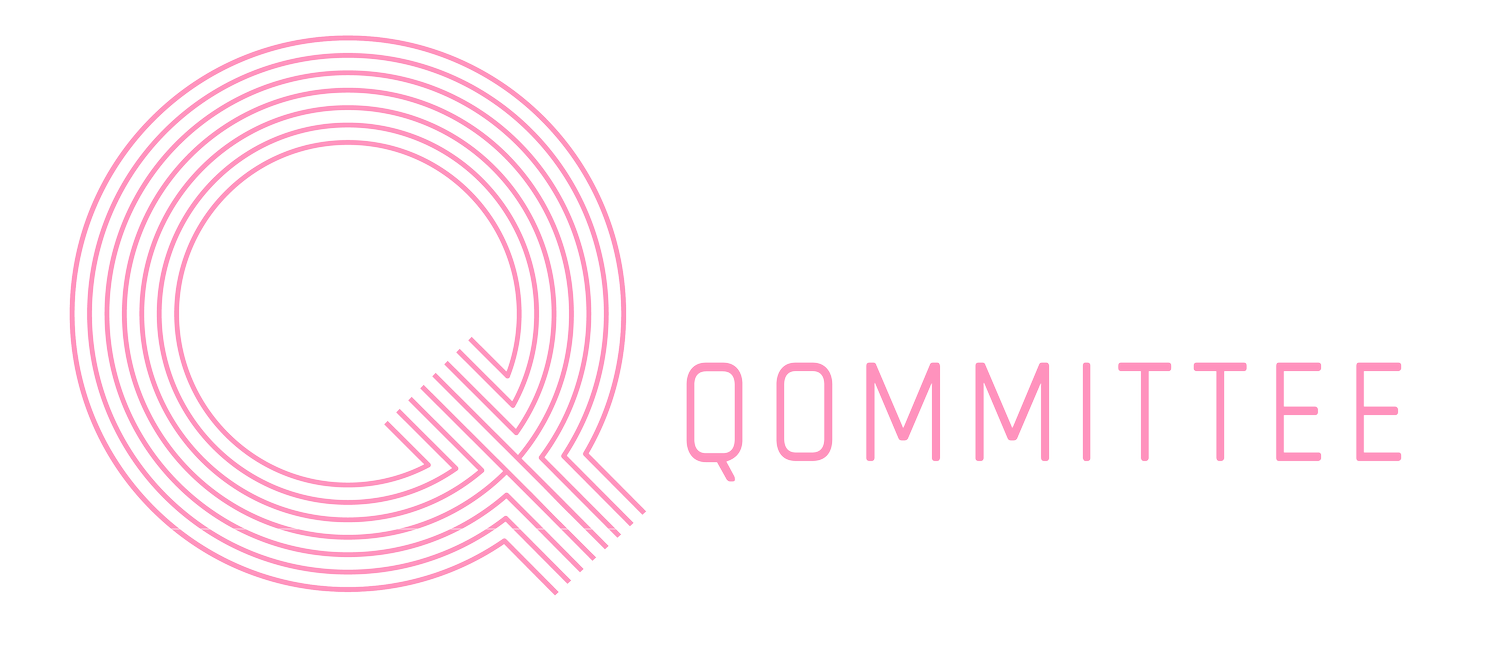Washington Post: Drag is not a sideshow — and neither is Trump’s attack on it
“Drag is a canary in the coal mine for all types of free expression,” Qommittee organizer Scott Simpson said. “It is a stand-in.”A petition sponsored by the Qommittee, addressed to major donors and supporters of the Kennedy Center, calls for the suspension of funding “until artistic independence is restored” and for donor dollars to be redirected “to banned or censored artists, artforms and the infrastructure that supports artistic freedom.” As of late last week, the petition had almost 40,000 signatures.
Column by Philip Kennicott
Last month, the National Park Service edited the website for the Stonewall National Monument in New York where a June 1969 uprising of gay men, drag queens and trans people is credited as a key moment in the birth of the modern LGBT (lesbian, gay, bisexual, transgender) civil rights movement. The Park Service removed the “T” in its reference to those who protested police harassment and discrimination, substituting the curiously truncated acronym LGB. This erasure, which distorts history, followed a raft of executive orders and rhetoric expressing explicitly hostile views of the trans community.
It also happened almost simultaneously with President Donald Trump’s takeover of the Kennedy Center, one pretext for which was the center’s occasional presentation of drag shows. Identifying as trans is a very different thing than drag, which is an entertainment with a complex relationship to gender and sexuality. But the frontal attack on trans rights and the sideswipe at drag shows are part of a larger conflict over gender and gender norms, or what the administration sometimes calls gender ideology.
These actions suggest that the administration will use gender as a fundamental wedge to divide the public, fracture the arts and cultural scene, and chill forms of expression it deems subversive of its nationalist, America First agenda. The ultimate goal may well be the redefinition of sexuality itself, making it once again what it was in the ancient world, a form of aggression, domination and possession.
The first step in this process is simply to foment and exploit confusion about categories and definitions. Drag is a performance in which the artists are often but not always gay or nonbinary men. Cross-dressing is so common throughout history and across cultures that eliminating it would leave a giant hole in the entertainment spectrum, including at the Kennedy Center, where women singing male roles is an established convention in opera and men impersonating women is a standard trope within theater (especially in performances of Shakespeare that are historically authentic to 17th-century norms).
Performers operating in this space include some of the most popular and beloved figures of the past half century. Barry Humphries, the Australian actor who married four women before his death in 2023, cross-dressed to play the character Dame Edna Everage, a flamboyantly self-confident matron who once shared a theater box with then-Prince Charles and Camilla Parker Bowles. “RuPaul’s Drag Race” is now in its 17th season, which means most young people of voting age have never known life without it. Cross- dressing often serves to reinforce clichés of normative heterosexuality, as in Tyler Perry’s creation of the character Madea or Robin Williams’s performance as Mrs. Doubtfire.
Even Trump has shown himself amused by drag. In a video clip from 2000, widely available on YouTube, the real estate magnate stuffs his face into the fake breasts of a cross-dressing Rudy Giuliani. The New York mayor slapped Trump and pretended to be offended by the gesture, which prefigured Trump’s infamous claims on the “Access Hollywood” tape (recorded five years later) about kissing and grabbing women by their private parts. “When you’re a star, they let you do it,” he told host Billy Bush. “You can do anything.”
By eliding drag, cross-dressing and trans identity, there is a suggestion that the last of these categories is somehow a form of impersonation, or choice, rather than a fundamental aspect of identity. Thus, being trans is a moral failing, as the president has underscored in the moralizing language of his executive actions on gender identity. One of them, which removes trans people from military service, argues that expressing a gender identity different from one’s biological sense “conflicts with a soldier’s commitment to an honorable, truthful, and disciplined lifestyle, even in one’s personal life.”
Transgender people are a relatively small minority in the United States, with only about 0.5 percent of adults identifying as trans, according to UCLA’s Williams Institute, which researches sexual orientation, gender identity law and public policy. Yet they have born the brunt of the administration’s animus, which may be a deliberate strategy. If some part of the fear and bigotry that Trump has encouraged against trans people carries over to the entirely different phenomenon of drag and nonbinary forms of performance, the wedge effect may further divide the LGBTQ+ community, and the larger public which is generally accepting of many forms of cross-dressing so long as it’s clearly entertainment.
That is already happening, says Scott Simpson, an activist who helped found the organization Qommittee for Drag Media, which responds to hate attacks, including threats and violence, against drag performers. The organization held a protest march Saturday that ended with a gathering at the Kennedy Center.
“Drag is a canary in the coal mine for all types of free expression,” Simpson said. “It is a stand-in.”
A petition sponsored by the Qommittee, addressed to major donors and supporters of the Kennedy Center, calls for the suspension of funding “until artistic independence is restored” and for donor dollars to be redirected “to banned or censored artists, artforms and the infrastructure that supports artistic freedom.” As of late last week, the petition had almost 40,000 signatures.
The wedge seems to be working. Indeed, since Trump announced his intention to take over the center, defense of the institution (including in the media and from this author) has reflexively repeated the fact that drag shows are a very small part of what the Kennedy Center offers.
So, let’s put on the record that one of the best shows the center has presented in the past quarter century was a 2018 evening-length version of Taylor Mac’s “The 24-Decade History of Popular Music.” The MacArthur Foundation genius grant honoree performed his wildly subversive history of American music in glittery, spangly drag, a gender and sartorial analogue to his shifting, love-hate relationship to music with centuries of aggression, racism, misogyny and militarism embedded in it. If autocrats around the globe, including figures like Hungarian Prime Minister Viktor Orban, have attempted to fuse nationalism, homophobia and patriarchy into a single, composite bogeyman, Mac picks up the gauntlet, slides a silken glove on it and strikes back, gleefully and brutally.
Trump’s attack on drag is canny in its recognition that drag can be one of the most destabilizing and subversive art forms. Its subversive power has ancient roots, as does the idea that gender fluidity is a kind of wisdom. Tiresias, the blind prophet and priest of Apollo from Greek mythology, lived both as a woman and a man, gaining a breadth of emotional and social experience that was essential to his oracular powers.
RuPaul Andre Charles connected a few of these dots in a 2016 explanation of the power of drag: “It’s been the same since the beginning of time when shamans, witch doctors, or court jesters were the drags. Which is to remind culture to not take itself seriously. To remind you that you are not your shirt or your religious affiliation. You are an extension of the power that created the whole universe.”
Trump probably doesn’t intuit or understand those connections, but he may sense that the power of drag is too close for comfort. The essence of drag is its exaggeration of gender and gender stereotypes in a theatrical style that gives the performer permission to say outrageous, often offensive things, without the usual social sanction.
That is also the definition of Trump’s style.
Trump also exaggerates gender, performing with hypermasculine bravado in a space where one can’t quite take him seriously, so much so that he is largely given a pass for saying things that are blatantly untrue and purposefully divisive. This kind of rhetoric would be fatal to any other politician who doesn’t exist in the infinitely permissive, carnivallike absurdist gender space that Trump has arrogated to himself. Just as drag queens can’t be shy, the president can’t dial back the male swagger without endangering the tacit permission he has been granted to say the most ridiculous things.
But this isn’t just about the president’s personal style. The president has surrounded himself with men who foreground gender as a cultural issue, including his vice president, JD Vance, who has said that men are forced to suppress their masculinity, that independent career women are doomed to unhappiness and that young people become trans to get into college and to “reject” their White privilege.
Vance also said, in a podcast interview with Joe Rogan, that Trump would win the “normal gay guy vote.” The word “normal” in that phrase seems to refer to gay men who act in stereotypically masculine ways to avoid the animus directed at other parts of the LGBTQ+ community.
The man who, as interim director, will enforce the anti-drag, anti-trans agenda at the Kennedy Center is an openly gay man, Richard Grenell, who served as Trump’s acting director of national intelligence in the first administration. In an interview about “becoming the first openly gay DNI and cabinet member in American history” that was still available on the DNI website until at least February, Grenell referred several times to the LGBTQ+ community, and said, “The best ally for the LGBTQ+ community is someone who understands we are just like them.”
Grenell is also a vocal supporter of the Tate brothers, including the openly misogynistic Andrew Tate, who was detained in Romania while authorities investigated him for sex trafficking and sex with a minor. After a meeting in Munich between Grenell and the Romanian foreign minister, Tate was released and flew to Florida on Feb. 27. Romanian authorities have said that Grenell did not pressure them to release the Tates, but there is widespread skepticism about that claim.
Seen from the perspective of the view of gender that emerged from feminism, and the LGBTQ+ civil rights movement over the past half century, none of this seems to make much sense. Trump has cavorted with a cross-dressing mayor, and one of his favorite musical acts, the Village People, inhabits a range of clichés of hypermasculinity popular within a particular gay subculture. Key supporters of the new administration appear to have no issues with either a gay man playing a major role in politics or influencers who have promoted violence against women.
The new paradigm for gender and acceptance is no longer an expanding notion of tolerance and acceptance. It is, rather, based on power, including the subjugation of women and a permissive attitude to sexuality borrowed from the ancient world: that men who slept with men were widely accepted within society so long as they maintained their masculine power and slept with partners of inferior social status.
And so, in the bedroom as on the world stage of geopolitics, might makes right. In theater, opera, ballet, poetry and most of the literary canon, this belief is held only by villains, men like Puccini’s Baron Scarpia or Shakespeare’s Iago. Now it is embraced by both our political and cultural leaders.

